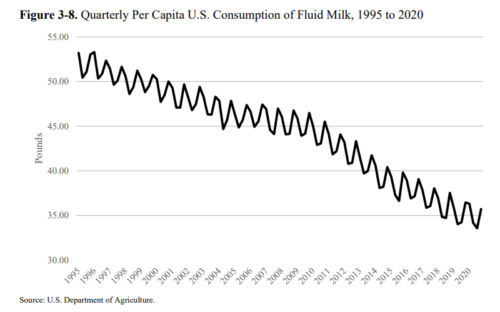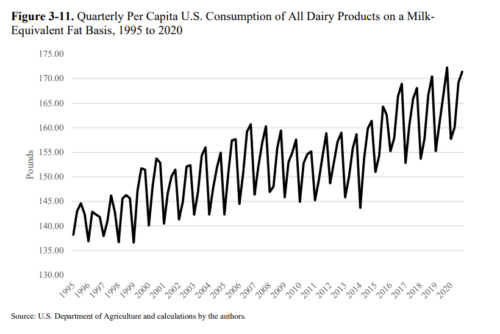Some thoughts about dairy checkoff programs
Jerry Hagstrom’s Hagstrom Report, to which I subscribe, often has information I would not otherwise see. Here’s one example.
He reported that USDA’s Agricultural Marketing Service finally released its analysis of dairy checkoff programs, supposedly due annually by law. No reports were published from 2020 through 2022.
Some members of Congress complained in a letter to Secretary Vilsack. That worked.
It makes interesting reading (to me, at least).
Checkoff—officially, research and promotion—programs tax commodity producers and use the funds for marketing purposes. The programs are mandated and managed by USDA, but paid for by commodity producers (conflict of interest, anyone?).
Two Dairy Checkoffs exist.
- The Dairy Research and Promotion Program (the Dairy Checkoff), funded by dairy producers and dairy importers to maintain and expand domestic and foreign markets for fluid milk and dairy products. The program collected $346.8 million in assessments in 2020.
- The Fluid Milk Processor Promotion program, also known as the Milk Processor Education Program (MilkPEP), is funded by fluid milk processors and “is designed to educate Americans about the benefits of fluid milk, increase milk consumption, and maintain and expand markets and uses for fluid milk products in the contiguous 48 States and the District of Columbia.” This program collected $85.7 million in assessments in 2020.
What is this about? At one glance:

On the other hand, dairy consumption as a whole—mainly because of cheese and butter—is going up.

The report says that for every dollar spent on generic marketing, the industry gets roughly $3 in return.
Checkoff programs raise lots of questions about whether the USDA should be sponsoring these kinds of marketing efforts for a small number of foods, and why the government should particularly promote consumption of dairy foods (or beef, for that matter), given concerns about their environmental impact, if nothing else.
The Agricultural Marketing Service is quite clear about its objectives: to promote consumption of U.S. agricultural products, no matter what they are.
The dairy industry must want these efforts to continue; it sees the decline in fluid milk consumption as a problem.
Given concerns about the waning health of Americans, the role of dairy checkoffs—and the USDA’s Agricultural Marketing Service—could use reconsideration.

